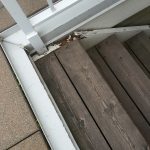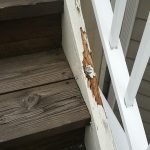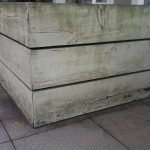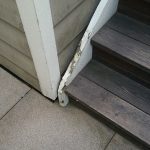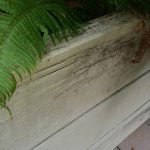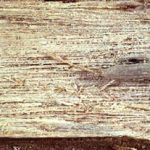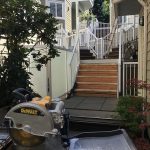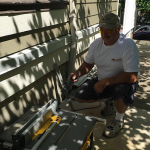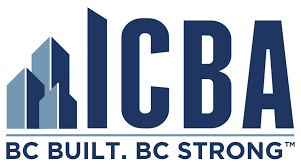We recently started a project removing all the rotting wood from a 32 unit complex in Vancouver. Given that we live in a very damp climate it’s important to inspect buildings for wood rot every 6-12 months. This a significant part of a building’s maintenance plan as rotting wood often goes unnoticed and can be hard to spot unless you are specifically looking for it.
Deteriorating wood has a tendency to rapidly spread if unattended which can be very dangerous to the structural strength of a building and can also reduce the buildings energy efficiency.
How it Happens
When water sits on any unprotected wood surface for a long period of time the moisture creates an environment for fungi to grow and the fibers in the wood to deteriorate and rot. Typically wood rot will begin to occur when the water/moisture content of the wood is anywhere above 20%.
It’s important to catch rot early! Keep your eye out for these common causes of moisture leading to rotten wood:
-
Leaky plumbing and poor drainage
-
Foundation cracks
-
Finish grades that slope toward the foundation
-
Improperly installed, damaged or corroded flashing
-
Water leaking in through a damaged roof
-
Water sitting under the building
-
Not enough ventilation
-
Greenery against the building which holds moisture
-
Bad drainpipes that keep wood wet
-
Poorly placed lawn sprinklers
-
Neglected wood
-
Untreated wood that’s in constant contact with damp concrete, soil or masonry
How to Spot it
Sometimes rot may be easily visible and other times it may take some investigating to find. Right off the bat, if the wood is soft, brittle or crumbly it likely has rot. Other common signs are cracked, peeling and blistering paint and wood that is damp, discoloured or green with algae.
Wood can easily be tested for rot by probing with a screwdriver, wood with interior rot will feel soft and sound hollow when tapped. If your screwdriver can easily poke into the wood, it more than likely has rot.
There are three common types of wood rot to look for:
-
Brown Rot – With brown rot, wood typically shrinks and turns brown in color, it cracks and separates into cube size pieces and becomes very weak and easy to crumble. This type of rot is also commonly referred to as dry-rot as it deprives the wood of it’s nutrients which creates a dry powdery appearance.
-
White Rot – As the name implies, this type of rot will turn wood white or yellowish and will make it feel and appear moist, soft and spongy and is commonly seen in hardwoods.
-
Soft Rot – This type of rot is rare and less aggressive than white and brown rot. Soft-rot fungi creates cavities and cracking inside the wood and sometimes causes discolouration similar to brown rot.
Keep these common places at the top of your check list when checking for wood rot:
-
Wooden window frames
-
Outer door thresholds, door frames, jams and trims
-
Outdoor decks – specifically the stairs and areas connected to the house
-
Roofs and seals around chimneys
-
Discoloured fascia below the roof line
-
Corroded flashing
-
Base of toilets, sinks and bathtub corners
-
Floors around water heater, washing machine and dish washer
How to Prevent it
A building’s exterior is exposed to weather (and a lot of wet weather here in Vancouver!) year-round. Many building owners don’t realize how important exterior paint is to protecting wood from water damage. Any small crack in paint and wood can allow water and moisture to fill the wood causing rot.
The number one way to avoid rot from happening is by regularly painting and staining exposed wood and sealing its joints and knots. Find out more about our painting, staining and sealing services here.
Other common ways to prevent water damage leading to wood rot include:
-
Using wood that is properly treated with a good preservative, especially near the ground.
-
Installing proper grading to prevent water from seeping under your building.
-
Keeping roof overhangs, downspouts and gutters clean and in good condition so that rainwater doesn’t overflow onto wood foundation and siding.
-
Keeping wood siding and untreated wood within 12 inches above the ground and keep leaf and dirt debris away from the building’s base.
-
Keeping exterior wood sealed with a coat of paint and caulk any cracks or joints on the surfaces.
-
Making sure the soil around the building slopes away from the walls to avoid water puddling
-
Using dehumidifiers and fans in bathrooms and kitchens to reduce water moisture and keep nearby wood elements dry
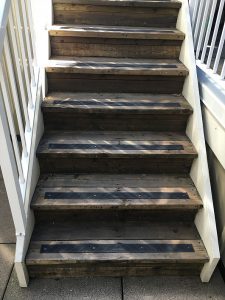
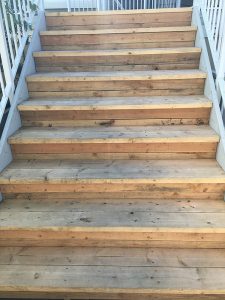
How to Remove
If you discover rotting wood around your building the first thing you want to do is find the location or cause of the moisture and repair or remove it right away. Rot isn’t something that should be ignored! Fungus is fast to spread and removing it early will end up saving you money in the long run.
If your building has rot give us a call. Our qualified team is here to assist you with projects of any size and budget. Contact Jonathan at 604-876-3305 ex. 111 or jonathan@prostar.ca for a free consolation or if you have any questions or concerns about rot in your building.

